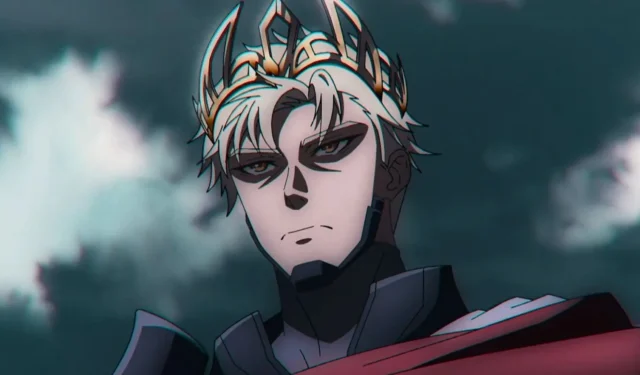Overview
- Arthur transcends the typical isekai trope of wish fulfillment, providing a refreshing perspective.
- His character maintains just enough complexity to engage viewers without losing relatability.
- The unique backdrop of Arthur’s past as a warrior king adds depth to his journey as an isekai protagonist.
**Warning: Minor spoilers ahead for the manhwa**
The latest anime adaptation of the isekai genre, The Beginning After The End, introduces us to King Grey, also known as Arthur. In a landscape crowded with isekai narratives, Arthur emerges as a uniquely compelling character who resonates deeply with fans. But what sets him apart from other protagonists in this genre?
Arthur’s character deftly navigates the tightrope between being intriguing and relatable. His depth ensures viewers remain engaged while allowing them to project their own decisions onto his journey. Significantly, the story explores the consequences of his past life, rather than dismissing it entirely, enabling the audience to share in the special knowledge Arthur possesses to tackle challenges throughout the series.
Arthur’s Push and Pull
How Arthur Challenges Audience Expectations

One of the pivotal aspects of Arthur’s role as a protagonist is his ability to act in ways that resonate with viewers, even when his choices diverge from what they desire. This deviation from standard isekai escapism allows Arthur to maintain a strong sense of self while engaging in the fantastical elements that isekai enthusiasts adore.
“A king never betrays the people who trust him. And… I promised someone very important to become a better person and to cherish the people around me.” -Arthur Leywin.
The narrative cleverly constructs interesting dynamics between Arthur and other characters, only to shift directions dramatically, creating new scenarios for Arthur to navigate. This strategy evokes genuine emotion in the audience, enhancing their investment in each relationship and emphasizing the poignant moments of separation.
For instance, take the relationship between Arthur and Tess. After rescuing her from human traffickers, the two spend years nurturing their bond. While a typical isekai could have focused solely on their journey together, the storyline necessitates their separation. This twist draws sympathy from viewers and heightens their anticipation for their reunion. Arthur’s experiences blend captivating isekai tropes with refreshing originality, allowing him to explore a magical academy while also embarking on dungeon-crawling adventures.
“Killing you here would be showing mercy. Instead, I’ll let you stew in the consequences of your actions here by taking what you value most.”-Arthur Leywin.
Ultimately, Arthur’s appeal lies in his refusal to conform to predictable narrative structures, taking his place in various fantastical situations while remaining true to his character arc as his new life unfolds.
The Appeal of Transcendent Knowledge
Feeling Unique in a Magical Realm

Another aspect that makes Arthur remarkably engaging is his ability to apply wisdom from his previous life to solve challenges in his new existence. While drawing on past experience is a common trope in isekai narratives, Arthur’s mastery of ki—which seamlessly translates into magical proficiency—enhances his problem-solving capabilities. This creates an experience for viewers, allowing them to feel one step ahead of other characters, regardless of their strength.
In stark contrast to many isekai protagonists who start as ordinary individuals and must adapt to their new reality, Arthur appears tailor-made for the trials he faces. His expertise with a sword often gives him a critical advantage in conflicts, making his journey even more captivating. Unlike other characters who merely offer fantasies of wielding great power, Arthur makes viewers feel entitled to his abilities, fostering a strong sense of identification.
You can watch The Beginning After The End on Crunchyroll.


